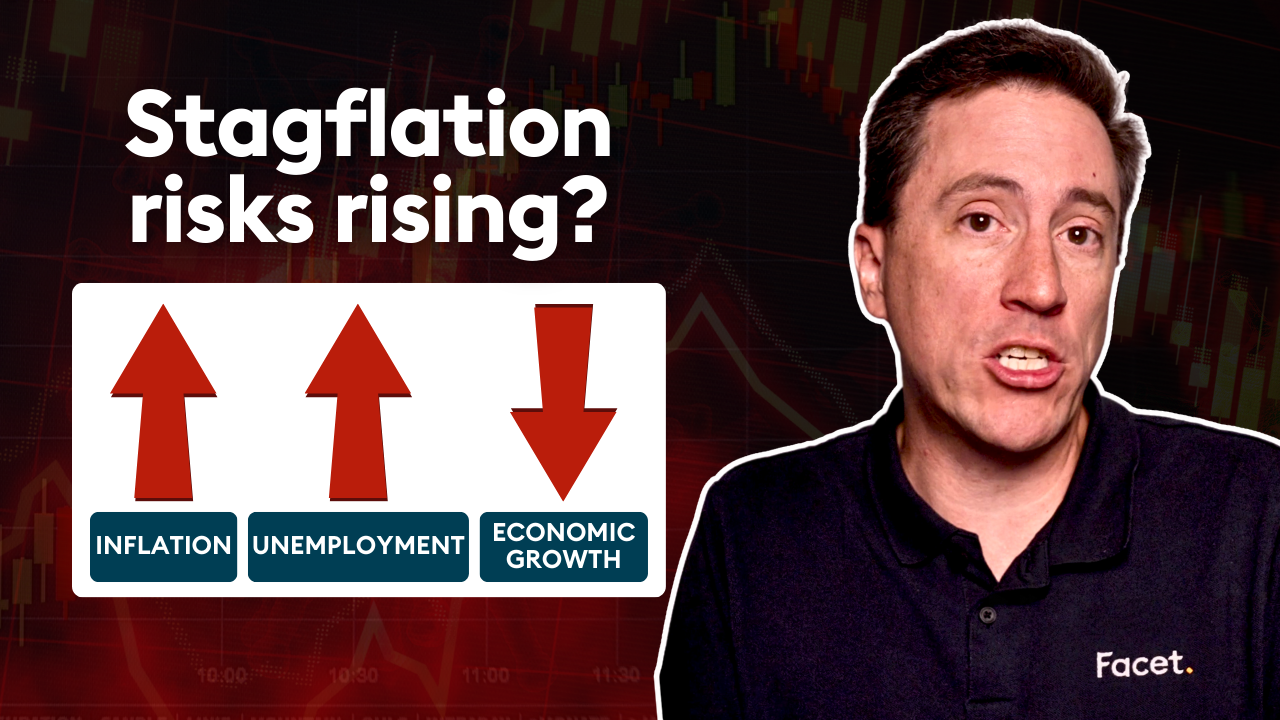
Key takeaways
- ETFs are a collection of investments that trade on a stock exchange
- ETFs combine the structure of a mutual fund with the trading style of individual stocks
- ETFs are designed to provide exposure to a particular market or sector, offering diversification and potential cost and tax benefits
- There are several types of ETFs, including equity, bond, commodity, currency, and specialty ETFs like leveraged and inverse ETFs
- ETFs are known for their low fees, broad diversification, and tax benefits
In 2022, global exchange-traded funds (ETFs) brought in a fresh $754B. The majority of this inflow seemingly came from the $1.3T outflow of mutual fund shares that same year.
As ETFs rise in popularity, more and more investors are looking to understand what they are, how they work, and how they differ from other investments.
Here's everything you need to know.
What is an exchange-traded fund (ETF), and how does it work?
Exchange Traded Funds (ETFs) are a type of investment fund traded on stock exchanges.
ETFs combine the structure of a mutual fund with the trading style of individual stocks.
They are similar to mutual funds in that they consist of a collection of underlying assets such as stocks, bonds, commodities, or currencies but differ in how they are bought and sold.
ETFs trade "intra-day," which is just a fancy term that means their price fluctuates throughout the day as they are traded—just like stocks. This provides investors with the flexibility to buy or sell their shares at any time during market hours.
ETFs are created and managed by financial institutions that buy the underlying assets and then issue shares of the ETF to the public.
These shares can then be bought and sold by investors on a stock exchange, with the price of the shares determined by the market supply and demand.
As such, the price of an ETF can be influenced by the performance of the underlying assets, as well as market sentiment and other factors.
ETFs are designed to provide investors with exposure to a particular market or sector, offering diversification and potential cost and tax benefits.
For example, an investor looking to invest in the stock market may choose to buy shares of an ETF that tracks a stock index, such as the S&P 500 or the Dow Jones Industrial Average (DJIA). This allows the investor to benefit from the performance of the index without having to buy individual stocks, which can be riskier.
Common types of ETFs
There are several types of exchange-traded funds available in the market, including equity ETFs, bond ETFs, commodity ETFs, and currency ETFs. Additionally, there are "specialty ETFs," like leveraged and inverse ETFs, that allow investors to take a more aggressive or defensive stance in the market.
Equity ETFs
Equity ETFs track the performance of a particular stock market index or sector. You have the option to invest in ETFs that cover large corporations, small businesses, or stocks that are specific to a particular country.
Equity ETFs also let you target sectors that might be doing well at a given time, like tech stocks or banking stocks, which makes them a popular choice.
Bond ETFs
These fixed-income investments invest in securities like government and corporate bonds. Similar to bond mutual funds, these investment options hold a diverse portfolio of bonds with varying strategies and holding periods, ranging from conservative US Treasuries to high-yield options.
Commodity ETFs
Commodity ETFs track the performance of commodities like gold, oil, or agriculture.
Currency ETFs
A currency ETF invests in a specific foreign currency or a basket of currencies.
Specialty ETFs
Leveraged and inverse ETFs are newer, riskier exchange-traded funds that offer high potential growth but also carry an extreme potential downside.
Leveraged ETFs
Leveraged funds use borrowed money (leverage) to invest in order to potentially increase returns. You can identify these ETFs by the leverage multiple they advertise, such as 2X, which means they borrow an additional $1 for every $1 invested by the public.
Inverse ETFs
Inverse funds move opposite the underlying asset or index they track. For example, an inverse ETF that tracks the S&P 500 would move up in value if the index goes down. These ETFs are for investors who want to hedge their investment portfolio against market downturns or take advantage of specific market movements.
Actively managed ETFs vs. passively managed ETFs
Actively managed ETFs are very rare, accounting for just 0.12% of all ETFs. On the other hand, passively-managed ETFs comprise over 99% of the ecosystem.
Here are the differences between the two.
Actively managed ETFs
- A fund manager buys and sells securities in an attempt to outperform a benchmark (e.g., S&P 500)
- Typically have higher fees: 0.70% average expense ratio (equity ETFs)
Passively managed ETFs
- Aim to mimic the performance of a benchmark (index funds)
- Generally have lower fees: 0.16% average expense ratio (equity ETFs)
The main reason active ETFs are less popular is that they don't perform as well as passive ETFs. What's more, as previously stated, passive funds are cheaper because a fund manager isn't getting paid to actively buy and sell securities. This is why passive funds are sometimes referred to as a "set it and forget it" investment.
Read more: What is passive investing?
How are ETFs different from mutual funds?
ETFs differ from mutual funds in their trading mechanics, fees, and tax treatment.
While mutual funds are bought and sold at the end-of-day net asset value (NAV) price, ETFs can be traded throughout the day, like stocks.
ETFs also generally have lower fees than actively managed mutual funds. According to the Investment Company Institute, actively managed equity mutual funds had an average expense ratio of 0.66% in 2022, 50 basis points (0.50%) more than the average equity ETF.
ETF investors often pay less in capital gains tax since ETF portfolios typically have low turnover (the measurement of a fund manager's purchases and sales of securities).
ETF pros
Low cost
Since the overwhelming majority of ETFs are passively managed, they have lower fees than most mutual funds. Lower overhead costs mean investors pay the investment company less than actively managed mutual funds.
Tax efficiency
Passively managed ETFs usually have a low turnover rate. As a result, ETFs usually generate fewer capital gains and capital gains taxes, making them more tax efficient than mutual funds.
Transparency
Investors can gain insight into the assets held by ETFs as they typically reveal their holdings daily. This is particularly useful for investors seeking transparency in their investments.
ETF cons
Potentially-higher costs (for traders)
If you prefer to manage your own investments and trade ETFs like stocks in a brokerage account, it's important to note that you may end up paying more in fees than if you were trading individual securities. This is because ETFs have expense ratios, which can be costly when combined with trading commissions.
Lower dividend yields
Dividend-paying ETFs may not have as high a yield as high-yield stocks. While you can select stocks with the largest dividend, with ETFs, your dividend is tied to the various yields of the fund’s underlying assets. As a result, ETF yields will be lower on average since they track a broader market.
Leveraged ETFs can be extremely speculative
Some leveraged ETFs aim to "2X" or "3X" the daily or monthly return of an underlying index. This means the fund managers will attempt to double or triple the return of their target index (e.g., the price of gold).
While this is an exciting investment strategy, it's important to understand that these funds can also drop more than 2X or 3X of the index's performance. This typically occurs when investors hold a leveraged ETF too long. As a result, investors must perform an extensive amount of research because losses can snowball fast.
Final word
Investing in ETFs can be a cost-effective way to diversify your portfolio and gain exposure to various markets and sectors. Not only do ETFs have low management fees, but their structure also offers tax advantages.
When done correctly, ETF investing can provide investors with stability, long-term growth potential, and the ability to adjust their holdings based on current conditions.
While there are specific risks associated with each type of ETF, educating yourself on the nuances of each investment vehicle and understanding its associated costs is important for taking full advantage of this increasingly popular option.
Facet
Facet Wealth, Inc. (“Facet”) is an SEC registered investment adviser headquartered in Baltimore, Maryland. This is not an offer to sell securities or the solicitation of an offer to purchase securities. This is not investment, financial, legal, or tax advice. Past performance is not a guarantee of future performance.


